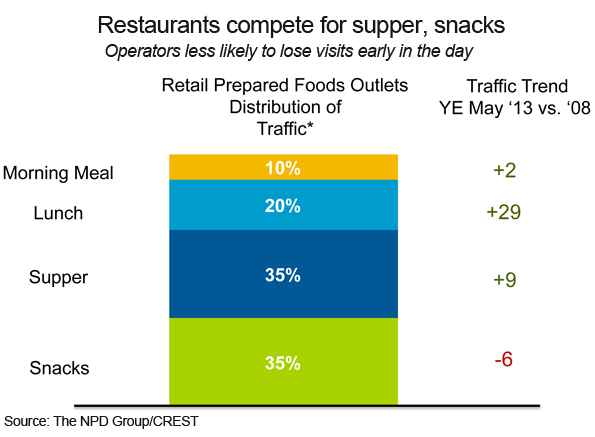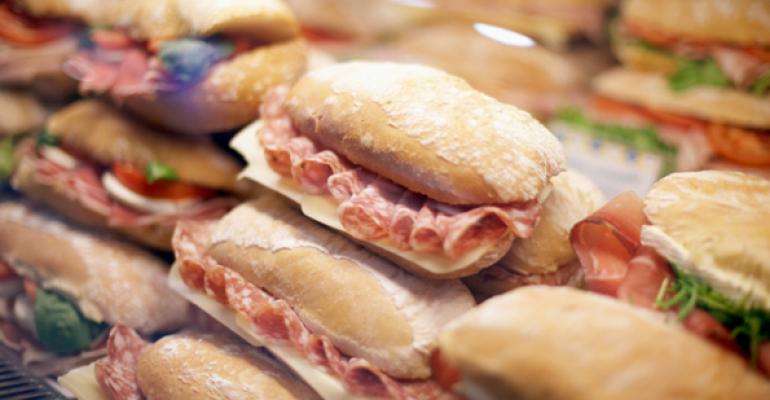Do you want the good news or bad news first? Visits to retail stores for prepared food orders during lunch hours have increased 29 percent in the last five years. That’s bad news for restaurants, which have lost one percent of their traffic over that same time, and it comes courtesy of The NPD Group’s latest report: The Retail Prepared Foods Market: Assessing the Competition.
The good news, though, is the opportunity this presents for savvy operators looking to offset the slow to stagnant growth in restaurant visits predicted for the next decade. Why not offer prepared grab-and-go options?
NPD’s research indicates the competitive advantage retail stores have over primarily quick-service restaurants is the availability of healthy options, a good variety of foods, light meal offerings, affordability and one-stop shopping. Could your restaurant put something together offering some or all of those components?
Why not, especially when NPD predicts prepared food purchases from retailers for at-home consumption will increase by 10 percent over the next decade, while restaurant visits will increase just four percent.
“It’s fact that retail prepared foods are taking visits away from restaurants and restaurant visits are not expected to grow much over the next decade, but there is also significant opportunity for foodservice operators to meet consumers’ needs for prepared foods,” says Bonnie Riggs, NPD restaurant industry analyst. “Learning more about how consumers use retail stores for their foodservice-type meals enables restaurant operators and their supplier partners to understand how to better compete in this area of growing consumer demand.“
This comes on the heels of a consumer survey by Visa that showed Americans go out to eat for lunch on average nearly twice a week, and spend $10 per meal, or $18 a week. Obviously at those dollar amounts, QSRs and fast-casual restaurants are probably winning the bulk of that business. So rather than cede business to those establishments, which are already losing business to retailers, casual dining eateries should consider putting together a grab-and-go lunch program.
Some other interesting nuggets to consider from Visa’s survey:
• Men spend $21 per week on lunch out, while women spend $15.
• Only one percent of people spend $50 or more for lunch a week, while 30 percent said they don’t buy lunch out at all.
• Regional differences exist in lunch spending: Southerners eat out twice a week, while those in the Northeast do 1.5 times a week.
• Respondents who make less than $25,000 per year spend more per meal ($11.70) than any other income bracket. Those making $50,000 a year spend $9.60 per meal.

Increase lunch sales by offering grab-and-go options
• See more Consumer Trends
0 comments
Hide comments




